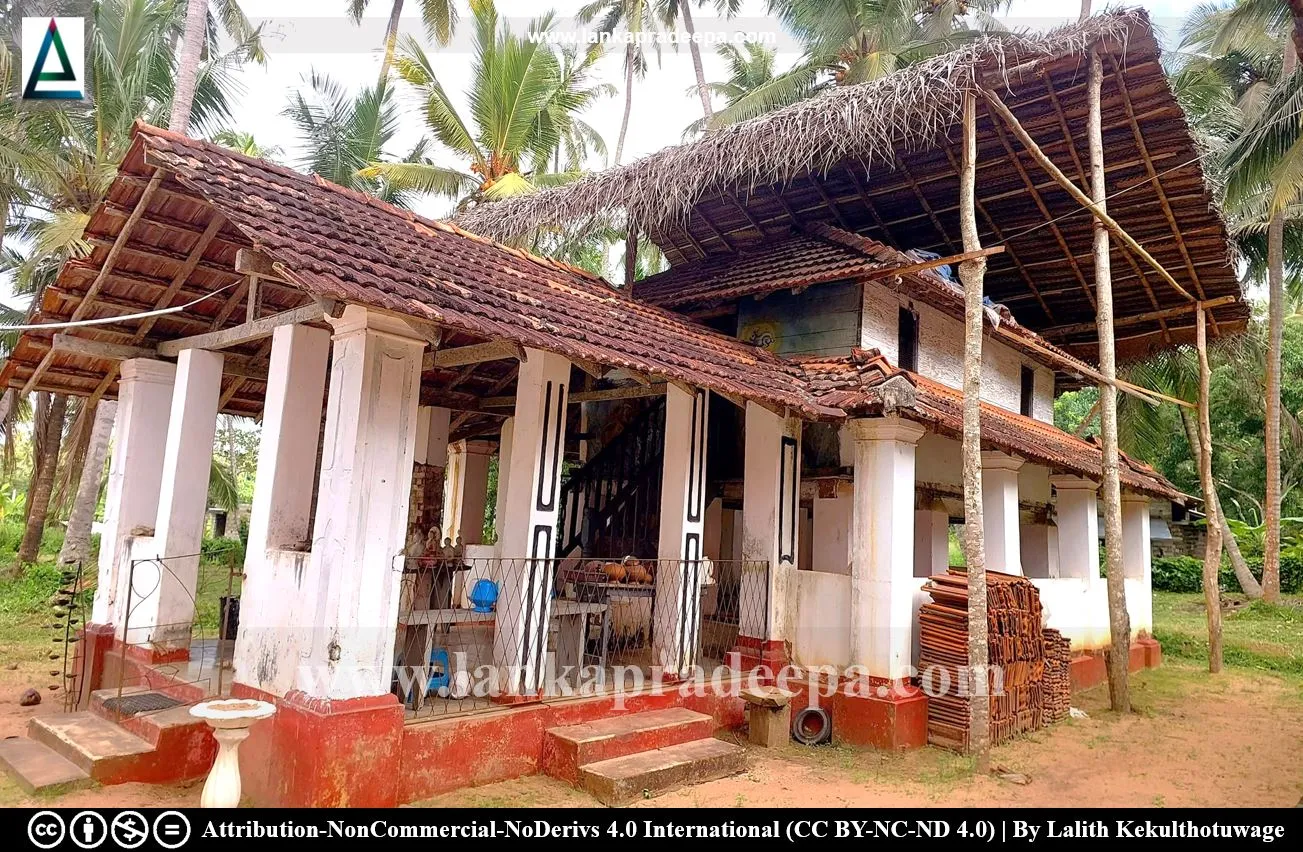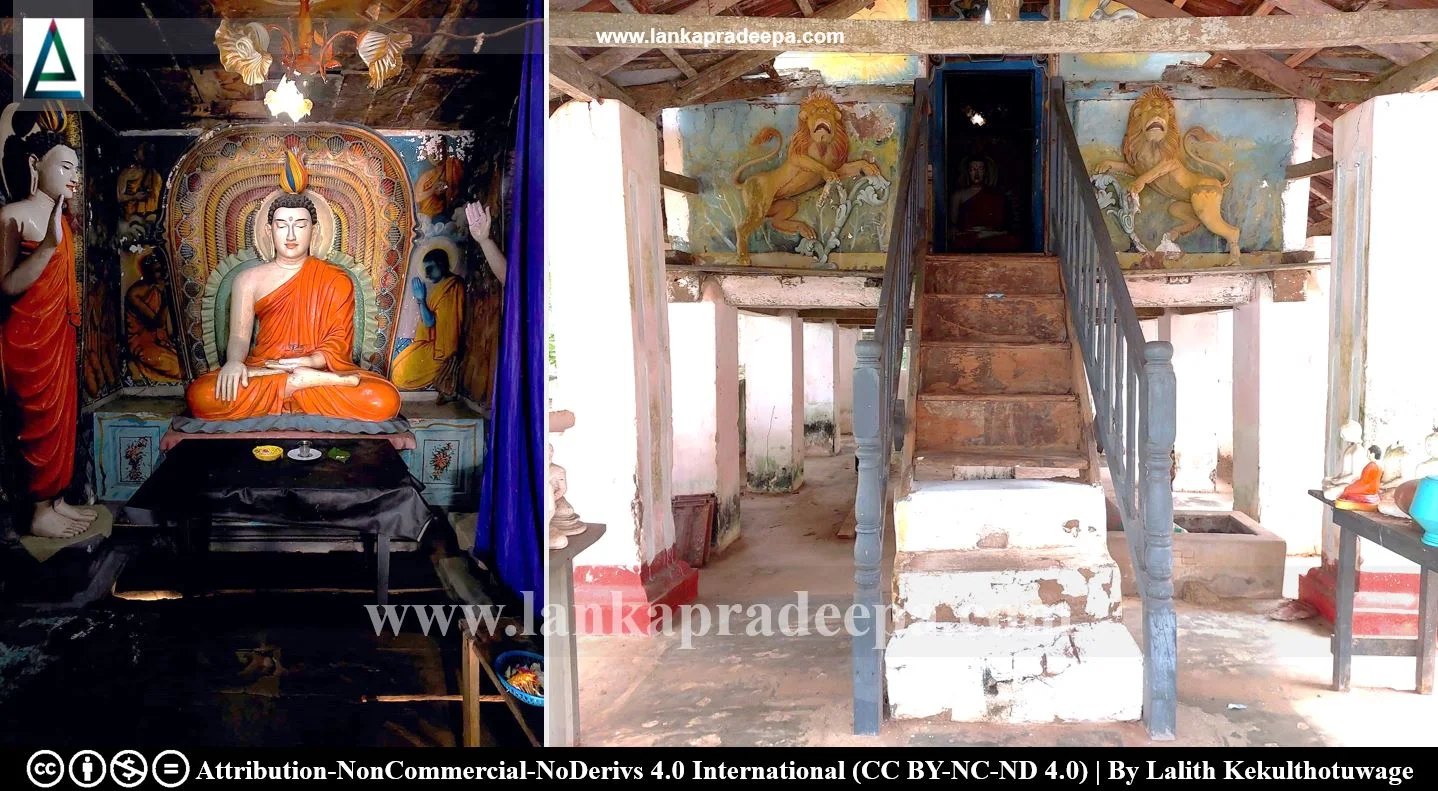
Sri Pushparama Purana Devapita Viharaya (Sinhala: පලුගමුව ශ්රී පුෂ්පාරාම පුරාණ දැවපිට විහාරය) is a Buddhist temple in Palugamuwa village near Dummalasuriya in Kurunegala District, Sri Lanka.
History
The Tempita Viharaya of Pushparama temple is considered a monument of architectural value. As recorded on the inner wall, it has been built or renovated in the Buddhist year 2469 / Saka year 1846 which is correspond to 1924 A.D.
Tempita Viharaya
Tempita Viharas were popular in many Buddhist temples during the Kandyan Period. These structures were usually built on a wooden platform resting on bare stone pillars or stumps which are about 1-4 feet tall. The roof is generally made of timber and held by wooden stumps. The walls are usually made of wattle and daub and form the main enclosed shrine room containing Buddhist sculptures and murals in the Kandyan style. Some Tempita Viharas have narrow verandas and ambulatories circulating the main enclosed space. The construction of these buildings started in the 17th century and lasted until the end of the 19th century (Wijayawardhana, 2010).
Palugamuwa Devapita Viharaya
The Devapita/Tempita Viharaya is the main monument of Palugamuwa temple. It is a rectangular building constructed upon 12 brick pillars plastered with mortar. A wooden flight of steps with railing has been provided to reach the wooden platform. The entrance door is guarded by two roaring lion figures. The small shrine room which is surrounded by a narrow ambulatory, houses a Buddha statue in Bumisparsha Mudra flanked on either side by the figures of Sariputta (left) and Moggallana (right), the chief disciples of Gautama Buddha. Two standing Buddha statues in Abhaya Mudra and two deities are found standing against the left and right walls of the shrine room. The entrance door of the shrine room is decorated with guardians and a Makara Thorana (dragon arch). The outer walls and the ceiling of the shrine room as well as the inner walls of the ambulatory have been painted with murals depicting the Suvisi-vivaranaya (Buddha to be receiving the blessing from 24 previous Buddhas), floral diagram and the scenes from heavens.

.
Attribution
1) LankaPradeepa.com extends its gratitude to Lalith Kekulthotuwage for providing the necessary photographs required for this article. All the photos are published here with the permission of the author.
References
1) Wijayawardhana, K., 2010. Sri Lankawe Tampita Vihara (In Sinhala). Dayawansa Jayakody & Company. Colombo. ISBN: 978-955-551-752-2. p.12.
Explore Other Nearby Attractions
Location Map (Google)
This page was last updated on 23 October 2023

